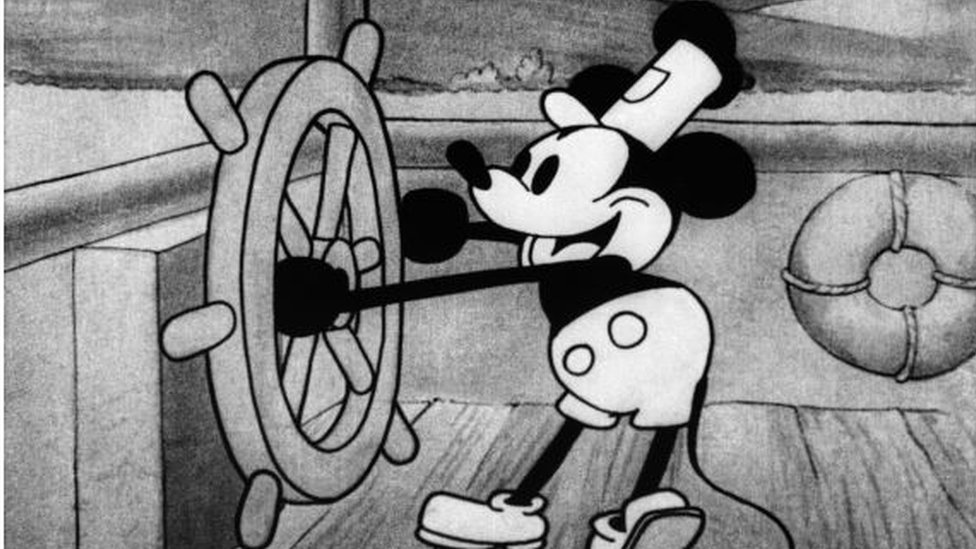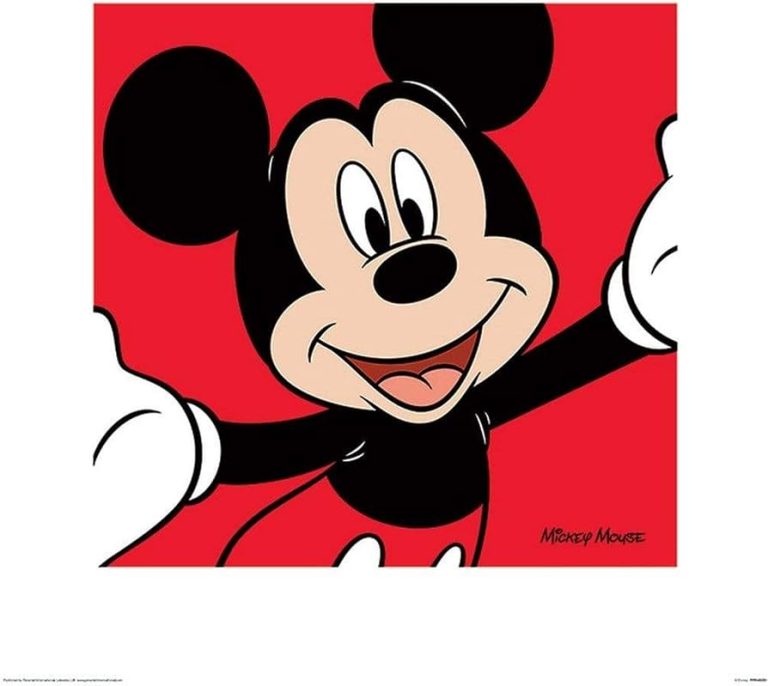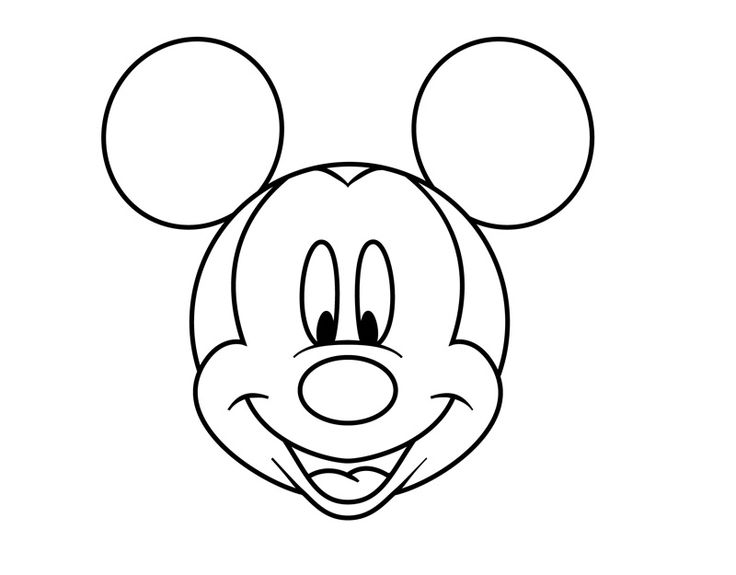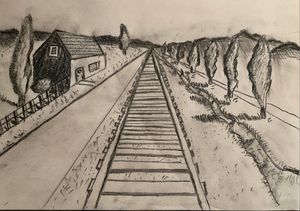A Mickey Mouse drawing transcends mere lines on paper, representing a cultural icon that has enchanted hearts around the world for nearly a century. The beloved character, created by Walt Disney and Ub Iwerks, is a symbol of joy, innocence, and the magic of childhood. A Mickey Mouse drawing often captures the timeless charm of the iconic mouse with his trademark round ears, cheerful smile,
- Mickey Mouse as the Ambassador of Animation
- Colors and Styles in Mickey Mouse Artwork
- Tips for Drawing Mickey Mouse Like a Pro
- Cultural Influences in Global Fan Art
- Iconic Wardrobe in Mickey Mouse Art
- Fan Art and Creative Interpretations
- Celebrating the Enduring Appeal of Mickey in Art
- Frequently Asked Questions (FAQs)

Mickey Mouse as the Ambassador of Animation
Mickey Mouse, the charismatic rodent in red shorts and white gloves, transcends generations and cultures to stand as a true ambassador of animation. Why? Let’s delve into the magic that makes Mickey the global mascot of this vibrant art form:
A Universal Icon: Mickey’s simple design, with its large round ears, expressive eyes, and playful grin, makes him instantly recognizable, even across language barriers. He’s an accessible symbol of joy, innocence, and adventure, understood and loved by children and adults alike.
Championing Optimism and Hope: Mickey embodies a spirit of endless optimism and perseverance. He faces challenges with a smile, bounces back from setbacks, and embraces life with wide-eyed wonder. This infectious positivity makes him a beacon of hope, reminding us to find joy in the everyday and face the world with courage.
The Power of Storytelling: Mickey’s adventures span numerous mediums, from classic cartoons to video games and theme parks. He’s a master storyteller, captivating audiences with his comedic antics, thrilling escapades, and heartwarming moments of friendship. Through his diverse narratives, he reminds us of the power of animation to transport us to fantastical worlds and spark our imaginations.
Innovation and Evolution: Mickey isn’t a static figure stuck in the past. He’s evolved alongside animation, adapting to new technologies and styles while retaining his core essence. This adaptability proves that animation is a dynamic art form, constantly pushing boundaries and offering fresh perspectives.
A Bridge Between Cultures: As a global icon, Mickey transcends cultural differences. He connects people across languages, religions, and backgrounds through the universal language of laughter, adventure, and shared memories. In a world often divided, Mickey offers a reminder of our shared humanity and the joys that bind us together.
Inspiring Future Generations: Mickey’s influence extends beyond entertainment. He inspires aspiring artists and animators, showcasing the power of creativity and imagination. His legacy encourages us to dream big, explore new possibilities, and believe in the magic of storytelling.

Colors and Styles in Mickey Mouse Artwork
From early black and white sketches to today’s hyper-detailed digital renderings, Mickey Mouse has worn a kaleidoscope of colors and styles throughout his artistic journey. Let’s dive into this vibrant palette and explore the artistic evolution of the world’s most beloved cartoon mouse:
The Classic Palette:
- Bold Black and White: Mickey’s origins lie in the stark contrast of black and white animation. The crisp lines, exaggerated features, and playful use of shadows created a timeless character instantly recognizable on any screen.
- Limited Color Palettes: Early colorized versions of Mickey used vibrant but limited palettes, often featuring primary and secondary colors. This restricted range emphasized Mickey’s bold outlines and accentuated his expressive movements.
- The Birth of Technicolor: The arrival of Technicolor in the 1930s brought a vibrant explosion of colors to Mickey’s world. Rich reds, deep blues, and sunny yellows filled his cartoons, adding depth and dimension to his world and reflecting the growing sophistication of animation.
Evolving Styles:
- Animation’s Golden Age: Mickey adapted to the dynamic styles of animation’s golden age, from the rubber hose animation of the thirties to the streamlined, gestural style of the fifties. Each era brought subtle changes to his proportions, expressions, and movement, showcasing the versatility of the character.
- Modern Interpretations: Contemporary artists reimagine Mickey through diverse styles and mediums. Pop art icons Andy Warhol and Roy Lichtenstein captured his iconic image in bold colors and graphic patterns. Street artists have incorporated Mickey into urban murals, reinterpreting him with a modern edge.
- Digital Innovations: Digital technologies have opened new doors for Mickey’s artistic expression. From 3D animation in films like Fantasia 2000 to interactive experiences in video games, Mickey continues to evolve in the digital age, pushing the boundaries of storytelling and engaging audiences in new ways.
The Power of Color in Mickey’s World:
Beyond aesthetics, color plays a vital role in shaping Mickey’s personality and the mood of his stories.
- Red: Mickey’s signature red shorts are a beacon of energy and enthusiasm, reflecting his adventurous spirit and playful nature.
- White: The bright white gloves represent innocence and purity, highlighting Mickey’s endearing qualities and moral compass.

Tips for Drawing Mickey Mouse Like a Pro
Ready to channel your inner animator and draw Mickey Mouse like a pro? Here are some tips to guide your strokes and bring the world’s most beloved cartoon mouse to life on paper:
Master the Basics:
- Start with Simple Shapes: Begin by breaking down Mickey’s body into basic shapes like circles, ovals, and rectangles. This helps you construct his proportions and pose accurately.
- Proportions are Key: Remember, Mickey’s head is about two-thirds the size of his body, and his hands and feet are roughly one-third the size of his head. Mastering these proportions ensures a recognizable Mickey.
- Lines and Curves: Mickey’s signature charm lies in his smooth lines and rounded curves. Practice drawing confident strokes that capture his playful energy and gentle nature.
Focus on the Details:
- Those Iconic Features: Pay close attention to his large, expressive eyes, the button nose nestled just above his wide smile, and the three small circles adorning his cheeks. Get these details right, and Mickey’s personality instantly shines through.
- Gloves and Shorts: Don’t forget Mickey’s iconic white gloves and red shorts! These add pops of color and define his silhouette. Make sure the gloves hug his hands and the shorts flow naturally around his legs.
Beyond the Basics:
- Shadow Play: Adding subtle shadows to Mickey’s form adds depth and dimension to your drawing. Play with light and shadow to create a sense of volume and movement.
- Expressions Matter: Mickey’s expressive eyes are windows to his soul. Experiment with different shapes and sizes to convey his emotions – wide with wonder, narrowed with mischief, or softened with kindness.
- Background Magic: Don’t leave Mickey alone! Draw him in his playful world. Add simple backdrops like streets, landscapes, or even other Disney characters to enhance your story and showcase your creative vision.
Practice Makes Perfect:
Remember, practice makes perfect! The more you draw Mickey, the more comfortable you’ll become with his proportions, features, and personality. Don’t be afraid to experiment, have fun, and let your creativity flow. Soon, you’ll be drawing Mickey Mouse like a pro, ready to share your love for this timeless icon with the world.
Bonus Tips:
- Watch classic Mickey cartoons to observe his movements and mannerisms.
- Use reference images for accurate proportions and details.
- Experiment with different mediums, like pen and ink, pencils, or even digital tools.
- Most importantly, have fun and enjoy the process of bringing Mickey Mouse to life!

Cultural Influences in Global Fan Art
Fan art, the vibrant tapestry woven by passionate fans, is not just a display of love for their favorite characters and stories; it’s a fascinating microcosm of cultural exchange and interpretation. Let’s dive into the vibrant threads of cultural influence that enrich global fan art:
Local Flavors:
- Visual Styles: Traditional artistic styles and motifs from different cultures get infused into fan art. Japanese manga influences might appear in comic-style drawings of Western superheroes, while Indian Kalamkari patterns could adorn illustrations of sci-fi characters.
- Storytelling Twists: Cultural norms and perspectives can give unique spins to established narratives. A Chinese fan artist might depict a superhero’s origin story through the lens of traditional mythology, while a Brazilian artist might add elements of carnivalesque festivity to a scene from a dystopian film.
- Characters Reinvented: Beloved characters get reimagined to reflect local aesthetics and sensibilities. A Korean artist might dress Sailor Moon in hanbok, a traditional Korean garment, while a Mexican artist might portray Captain America in the vibrant colors and patterns of lucha libre masks.
Global Conversations:
- Shared Platforms: The internet and social media platforms act as fertile ground for cross-cultural fan art exchanges. Artists from different countries can connect, share their interpretations, and inspire each other, leading to a fascinating blend of influences.
- Collaborative Creations: Online communities facilitate collaborations between artists from diverse backgrounds. A Japanese artist might team up with an American artist to create a mash-up comic combining their favorite anime and Western comics.
- Mutual Appreciation: Cultural barriers are broken down as fans from different corners of the world discover and appreciate each other’s creative expressions. A Thai fan artist might draw inspiration from the bold lines of an American action film, while a French artist might be captivated by the delicate brushstrokes of a Japanese manga illustration.
The Impact of Cultural Influence:
- Enriched Perspectives: By exposing fans to diverse artistic styles and storytelling approaches, cultural influences broaden their appreciation and understanding of the world around them.
- Creative Innovation: This cross-pollination of ideas sparks creative innovation, pushing artists to experiment with new techniques, explore unfamiliar narratives, and challenge established norms.

Iconic Wardrobe in Mickey Mouse Art
From his humble beginnings in black and white to his dazzling digital renditions today, Mickey Mouse’s wardrobe has evolved along with animation, mirroring cultural trends and artistic styles while retaining his timeless charm. Let’s delve into some of the iconic outfits that have adorned the world’s most beloved cartoon mouse:
The Classic Ensemble:
- Bold Red Shorts: These instantly recognizable shorts, introduced in 1932, symbolize Mickey’s adventurous spirit and playful nature. Their vibrant color pops off the screen, making him stand out even in crowded scenes.
- Simple White Gloves: More than just practical accessories, the gloves add a touch of innocence and purity to Mickey, highlighting his endearing personality and moral compass.
- Yellow Shoes: Adding a final splash of color, Mickey’s yellow shoes complete his cheerful palette and hint at his optimistic outlook and sunny disposition.
Beyond the Basics:
- The Sorcerer’s Apprentice Hat: Donning this magical headwear in “Fantasia” (1940), Mickey transformed into a mischievous apprentice, showcasing his versatility and the endless possibilities of animation.
- Sailor Outfit: Channeling his inner mariner in “Steamboat Willie” (1928), Mickey’s nautical attire, complete with a striped shirt and sailor hat, cemented his image as a timeless icon and a symbol of early animation history.
- Santa Mickey: Bringing festive cheer in his red suit and fluffy beard, Santa Mickey reminds us of the joy of the holiday season and Mickey’s enduring role as a bringer of happiness.
Modern Twists:
- Streetwear Chic: Mickey has embraced contemporary fashion trends, rocking cool urban looks with hoodies, sneakers, and even graffiti-inspired designs. These modern outfits showcase his adaptability and relevance to younger audiences.
- Cultural Collaborations: From mixing traditional Hawaiian patterns into his shorts to sporting Bollywood-inspired attire, Mickey has partnered with artists and designers around the world, expanding his wardrobe and connecting with diverse cultures.
- Digital Dazzle: As animation embraces digital technologies, Mickey’s wardrobe reflects the advancement. Holographic suits, glowing neon accents, and even futuristic armor push the boundaries of his style, highlighting the ever-evolving world of animation.
The Power of Wardrobe in Storytelling:
Mickey’s wardrobe isn’t just about aesthetics; it plays a vital role in storytelling. Different outfits can:
- Signal Emotion: A tattered pirate costume tells a tale of adventure, while a regal suit reflects Mickey’s leadership qualities.
- Enhance the Setting: Space age attire transports him to futuristic worlds, while a jungle explorer’s hat plunges him into wild adventures.
Fan Art and Creative Interpretations
the captivating world of fan art! Where passion meets creativity, and beloved characters are reimagined through the lens of countless imaginations. But fan art is more than just pretty pictures; it’s a playground for creative interpretations, a vibrant dance between established narratives and personal expression. Let’s dive into the magic of this artistic phenomenon:
Redefining the Familiar:
Fan art breathes new life into established stories and characters. It allows us to:
- Challenge established norms: A superhero stripped of their cape, a princess wielding a sword instead of a tiara – fan art dares to question the familiar, offering alternative perspectives and sparking new conversations.
- Explore hidden depths: Through subtle tweaks in character design or unexpected narrative twists, fan artists can delve into the unexplored corners of their favorite worlds, revealing hidden facets of personalities and motivations.
- Inject personal meaning: A heartfelt portrayal of a character’s struggle, a humorous spin on a classic scene – fan art becomes a canvas for personal interpretation, reflecting the artist’s own experiences and emotions onto the beloved characters.
A Mosaic of Influences:
Fan art isn’t a vacuum; it thrives on a cross-pollination of influences. It can be:
- A fusion of styles: Anime might meet Western comics, traditional painting might blend with digital techniques, creating unique hybrids that push boundaries and defy categorization.
- Inspired by diverse cultures: A Japanese artist might reimagine a European fairytale through the lens of Shinto mythology, while a Mexican artist might infuse a sci-fi story with elements of Dia de Muertos.
- A tapestry of shared passion: Fan communities across the globe connect and inspire each other, with ideas and techniques spreading like wildfire, nurturing a sense of shared creative journey.
The Impact of Creative Interpretation:
Fan art isn’t just a self-indulgent hobby; it has the power to:
- Deepen engagement with stories: By offering alternative perspectives and interpretations, fan art encourages us to think critically about the narratives we love, enriching our understanding and appreciation.
- Foster community and connection: Shared passion for characters and stories brings fans together, creating vibrant online communities where ideas are exchanged, friendships are forged, and creativity flourishes.
Celebrating the Enduring Appeal of Mickey in Art
From his humble black and white beginnings to his dazzling digital renditions today, Mickey Mouse has woven a tapestry of enduring appeal in the world of art. He’s not just a cartoon character; he’s a blank canvas for artistic expression, a symbol of timeless joy, and a constant source of inspiration. Let’s raise a paintbrush in celebration of Mickey’s artistic magic:
A Universal Canvas:
Mickey’s simple design, with its large round ears, expressive eyes, and playful grin, transcends language and cultural barriers. He’s a blank canvas for artists of all styles and backgrounds, inviting them to reinterpret him through their unique lenses. Pop artists have captured his iconic image in bold colors and graphic patterns, while street artists have incorporated him into urban murals with a modern edge. Whether rendered in traditional charcoal or futuristic holographic hues, Mickey remains instantly recognizable and universally loved.
A Timeless Symbol of Joy:
Mickey’s essence lies in his infectious optimism and playful spirit. He faces challenges with a smile, bounces back from setbacks with unwavering resilience, and embraces life with wide-eyed wonder. This enduring spirit of joy translates beautifully into art.
A Constant Source of Inspiration:
Mickey’s artistic adaptability inspires artists of all ages and skill levels. His versatility encourages experimentation with different styles, mediums, and techniques. Aspiring animators find guidance in his fluid movements and expressive gestures, while seasoned professionals push the boundaries of animation through imaginative digital renditions and innovative storytelling. Mickey’s legacy acts as a constant source of inspiration, reminding us that creativity has no limits and that even the most beloved characters can evolve and surprise us.
More Than Just a Drawing:
Ultimately, Mickey Mouse in art is more than just a visual representation. He’s a conduit for emotions, a symbol of shared memories, and a bridge between generations. He sparks nostalgia in adults, ignites imaginations in children, and brings families together through the universal language of laughter and adventure. His presence in art transcends the canvas, reminding us of the power of stories to connect us, bring joy, and inspire creativity.
Frequently Asked Questions (FAQs)
- Start with simple shapes: Begin by sketching basic shapes like circles, ovals, and rectangles to represent the head, torso, and limbs. This will help you build a foundation for your drawing before adding details.
- Pay attention to proportions: The proportions of a girl’s body are generally different from those of a boy. For example, the head is typically larger in proportion to the body, and the waist is narrower than the hips.
- Oversexualization: Avoid drawing girls in overtly suggestive poses or clothing. Focus on capturing their personality and individuality rather than their physical attributes.
- Clichés and stereotypes: Don’t fall into clichés like damsels in distress or overly bubbly princesses. Be creative and explore diverse representations of girls.
- Art books and tutorials: There are many great books and online tutorials available that can teach you how to draw girls in different styles. Look for resources specifically focused on female figure drawing or character design.
- Online communities: Join online communities or forums for artists who draw girls. This is a great way to get feedback on your work, learn from others, and stay inspired.




















